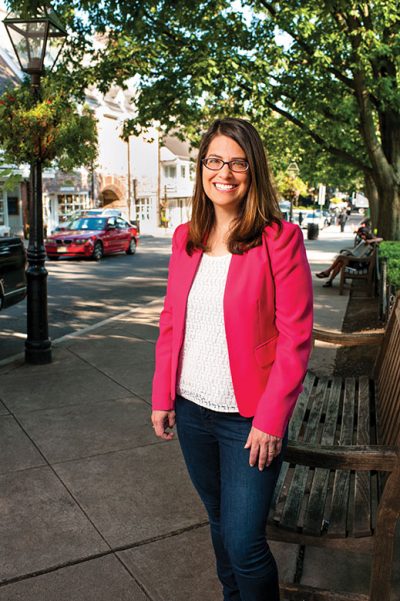
“If at first you don’t succeed, try again.” That’s the advice that Liz Lempert, mayor of Princeton, has for any of the 565 municipalities in New Jersey that may be considering consolidation or shared services with neighboring towns in an effort to save money and avoid property-tax increases.
Lempert speaks from experience. It took four attempts over nearly 60 years, but in November 2011, the voters of Princeton Township and Princeton Borough finally approved consolidation. After a yearlong transition, on January 1, 2013, Lempert became the first mayor of the newly consolidated municipality of Princeton. At the time, those opponents of consolidation cited such concerns as the cost of the transition and the fear that services would diminish.
More than four years later, Lempert says the efficiencies achieved through consolidation have served the residents well. “With consolidation, we had the flexibility and space to house the Health Department next to the Affordable Housing and Human Services Departments, as well as the Senior Resource Center,” says Lempert, citing one benefit. “Those agencies now are better able to work together to deliver comprehensive services to residents coming for help.”
Lempert says the combined municipality has exceeded the projected savings of $3 million annually—achieved largely by eliminating redundant jobs. The benefits don’t end there. Because they now have a single 911 dispatch center serving the community, and a single emergency operations center, emergency response operations have significantly improved.
Consolidation also has affected police performance. “Under the leadership of Chief Nicholas Sutter, the new department has thrived,” says Lempert. “The department is smaller overall [down from 60 combined officers to around 50], but there are more officers on the street because the administrative staff is smaller, and the focus can be on service delivery and building relationships.”
What will it take for more municipalities to follow Princeton’s lead? “Realistically, it’s going to take establishing creative incentives for municipalities and counties to consolidate and regionalize,” says John G. Donnadio, executive director of the New Jersey Association of Counties. “The state needs to supply the seed money to get this started,” says Donnadio. “You can’t mandate that towns consolidate. You can’t punish those who don’t. But you can incentivize.” (The state’s Department of Community Affairs helped fund the Princeton consolidation.)
Donnadio cites the state’s 911 system as ripe for consolidation. He says there are currently 197 service centers for 911 calls in the state. His group proposes cutting that to 21.
It’s clear from the Princeton experience that you need the right people in place to make consolidation work. Lempert says a key to Princeton’s success was bringing in a consultant—Rochester, New York-based CGR—to help “establish baselines, identify options, and crunch the numbers.” Lempert adds that it’s also essential to have the support of other community leaders—such as those who took part in a commission to study the consolidation plan. “Having elected officials at the table is key,” she says. “I can’t imagine Princeton having had a successful process if the elected officials were absent from the study commission or if they were opposed to it. Most of us in office at the time either supported consolidation or were open to exploring it.”
Lempert advises municipalities to consider shared services as an easy first step toward consolidation. “When budgets are tight, giving up a little bit of control in exchange for tax savings is typically a good deal,” she concludes.



